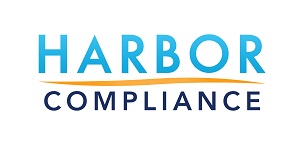 Special to the Philanthropy Journal
Special to the Philanthropy Journal
By Ifeoma Aduba
Trust is important to organizations of all types, but it’s the lifeblood of a nonprofit. Every donation to your nonprofit is a vote of confidence and a leap of faith that the money will be managed carefully and used effectively to accomplish your mission. That’s why government oversight is so important in the nonprofit sector. It ensures the financial transparency and accountability donors need to make informed decisions and donate with confidence.
But the research and paperwork required to keep up with government regulations can be daunting. Our goal is to save you some research (including the work of decoding government statutes!) and point you to helpful resources to guide you along the path of starting and running a compliant nonprofit organization.
 Step One: Consider What Kind of Organization You Want to Build
Step One: Consider What Kind of Organization You Want to Build
One of the first tasks of an entrepreneur is to identify an unmet need to fulfill, and the nonprofit founder’s job is the same. Before laying the plans for your nonprofit, check to see if the need you’ve identified is being met by another organization in your community. If so, throwing your support behind an existing organization may be the best way to accomplish your goals.
If you’ve evaluated the need and identified a gap in services, the next step is to consider what kind of organization you want to create. Many people assume that “nonprofit” simply means a tax exempt organization, or an organization that doesn’t earn a profit, but this isn’t necessarily true. Organizations can be nonprofits without being tax exempt, and they can — and should — earn profits. What sets them apart is their legal structure and what they do with their profits. In a business, profits support the business, owners, and investors. In a nonprofit, profits support the mission.
The legal structures available to you will depend on your state of formation and the specific nature of your mission. Most nonprofits are formed as nonprofit corporations, but there are many other options. Structures that blend aspects of for-profit and nonprofit operations are becoming increasingly popular, opening up a new world of choices for the social entrepreneur. Ultimately, your choice should be based on factors such as your primary purpose, how and where you expect to generate revenue, how the revenue will be used, how much control you want to keep over the organization, and what sort of personal compensation you desire.
Step Two: Explore 501(c) Options
If you plan to raise funds and you qualify for federal tax exemption, it makes sense to pursue it. The first step in this process is to identify what type of nonprofit you’re creating from among the more than two dozen classifications established under IRS Section 501(c). Most nonprofits are organized under Section 501(c)(3), which encompasses charitable organizations. 501(c)(3)s cannot be created to benefit private interests and cannot engage in political activities, among other limitations.
Charitable organizations are further split into public charities and private foundations. Public charities generally raise funds from the public and provide services, while private foundations typically derive their revenue from one major source, such as family or corporate funds, and further their missions primarily by funding grants.
Step Three: Build Your Board
Once you’ve identified what sort of nonprofit you’re creating, your next task is to decide how your organization will be run. A nonprofit corporation is a legal entity that can enter into contracts, and as such it requires a board of directors who have legal authority and accountability for the actions of the corporation. The board is responsible for electing officers and overseeing the chief executive or executive director, who is generally the only employee of the board. You may also need to recruit staff and volunteers, and potentially advisory board members or friends groups.
Most states require nonprofits to appoint a minimum number of board members, which must be maintained at all times. You can find a breakdown of state requirements here. The board sets the mission and goals, and the executive director carries out the strategy. Directors make decisions as a body with a quorum, or minimum number, present and voting. Board members have a duty of care, loyalty, and obedience to your organization, a significant responsibility.
Step Four: Incorporate Your Legal Entity
If you’ve given careful consideration to all of the above issues, you’re ready to move on to incorporate your nonprofit. This requires applying through your state’s corporations division, generally under the secretary of state. To do this, you’ll need to draft articles of incorporation, also known as a corporate charter in some states. The articles of incorporation outline your purpose and may also state the activities you will not be engaged in. Templates such as this one can provide good material to get you started, although it is critical to customize your bylaws so that they will lay the groundwork for success, as well as approval of your filings with both the state and the IRS. In some states, you will also need to publish a notice of your intent to file following your state’s guidelines.
Another important early step is creating bylaws to establish how your nonprofit will be run. Once again, a good template will help you get started in the right direction but should be fully customized for your organization. Your bylaws provide basic information such as how many directors and officers your organization will maintain, how long they will serve, how they will be elected, and how the bylaws will be amended when needed. You’ll also need to draft a conflict of interest policy to guide the nonprofit when the organization’s interests may conflict with the private interests of an officer, director, or other staff member. A good policy includes a disclosure statement for staff to sign annually, a process for reviewing potential conflicts, and steps for handling conflicts once they arise.
Finally, you’ll need to obtain tax identification numbers, including a federal Employer Identification Number (EIN) through the IRS and one or more state tax identification numbers, depending on your tax registration obligations.
Step Five: File for Tax Exemptions
To qualify for federal income tax exemption under IRS Section 501(c)(3), nonprofits must file within 27 months of their date of formation. Once approved, the IRS issues a determination letter declaring your status. Nonprofits may also be exempt from state taxes such as sales and use taxes. You’ll find considerable variety in state tax regulations from state to state.
Some organizations such as churches are automatically exempt from taxes and do not need to apply for an exemption. In most cases, however, exemptions require formal applications; often, they require annual renewals as well. For that reason, it’s important never to assume that you’re exempt from a tax based on your nonprofit status, or that your exemption means you don’t have any paperwork to file.
Your IRS application will include your founding documents and other supporting materials, all filed along with IRS Form 1023 or 1023-EZ. Approval can take as little as a few weeks for the 1023-EZ or several months for the 1023.
Step Six: Register to Fundraise
If your organization raises funds, you may also be required to meet charitable solicitation registration requirements in each state. Forty-one states require nonprofits to register to solicit their residents, and 25 require certain disclosure language to be used in solicitations. Working with professional fundraisers or engaging in commercial co-ventures triggers additional requirements in many states.
Many states provide exemptions for nonprofits that fall beneath a specified revenue threshold, but once again, being exempt form the requirement doesn’t always mean being exempt from the paperwork. If you fall under the threshold, you may still need to apply for the exemption and follow up with periodic renewals.
One of the hardest aspects of fundraising registration for many nonprofits is determining where they need to register. The answer is that you’re obligated to meet the requirements wherever your fundraising messages are being sent. When fundraising online, since your fundraising appeals are being broadcast nationwide and beyond, you may be subject to requirements in every state that imposes them.
Step Seven: Keep It in the Cloud
Once your initial filings are complete, you will have ongoing regulatory filings to attend to, including annual reports with the secretary of state, registered agent service, tax filings, fundraising registration renewals, and more. The best way to ensure that these filings do not fall through the cracks is to automate the work with appropriate compliance software. Consolidate all regulatory filings in one system and set up automated reminders to alert staff of upcoming deadlines. Cloud-based software that provides real-time monitoring of your status in every state, instant access to all of your corporate records, and easy sharing among your teams is the optimal solution.
Benefits of Total Compliance
You started down this path because of a bold idea and a desire to create change. Wading through all of these requirements can feel like navigating a bureaucratic obstacle course, but it’s really just the hard work of laying a strong foundation for a sustainable, successful nonprofit organization. Getting expert advice and giving each step thorough consideration will help you create a nonprofit that merits the public’s trust, invites support and engagement, and can stand the test of time to accomplish your vision and mission for many years to come.
Ifeoma (Ify) Aduba brings more than 20 years of experience in nonprofit leadership to her position as nonprofit partnership manager and compliance specialist with Harbor Compliance. She currently serves as president of the board of the Pennsylvania Association of Nonprofit Organizations (PANO), board member of the Bucks County Women’s Advocacy Coalition, and president of the administrative ministries team at Doylestown United Methodist Church (DUMC). Ify holds a B.A. in politics from Mount Holyoke College and a master’s degree in nonprofit management from Eastern University.





